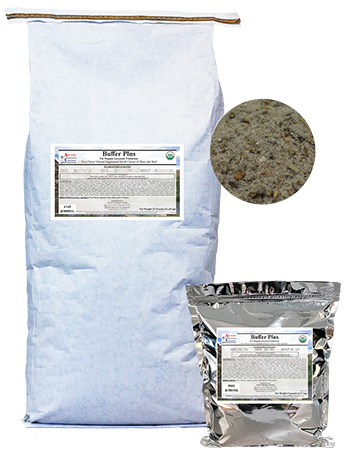Categories
ABC Easy Start Options (3)
ABC ORGANIC Equine Products (50)
ABC Organic Plus & Fortified Top (22)
Age-Defying Skin Care-HUMAN
Algae BG and KELP (seaweed) (3)
Aloe Vera (2)
Amino Acids - Essential Fatty Ac (1)
Anhydrosis Supplement (1)
Anti-Inflam / Pain / Joint (8)
Antioxidants (10)
Ayruvedic Herbs
Beta Glucan Certif. Organic Medi (90)
BREATHING Issues-Allergies (15)
CANADA - Products (22)
CATS (43)
CBD Pure Cannabidiol Products (7)
Choline - Neuro Transmitter (3)
Coffee Happy Coffee & Nootropics (1)
COLIC REMEDIES (8)
COLOSTRUM products (1)
CONSULTATION FEE 1/2 to 1 hour (2)
Cushings/Obese/IR/EPSM (18)
DENTAL - Equine (3)
Detoxify - MOP up toxins (2)
DIGESTIVE HEALTH EQUINE (10)
Digestive System - Hind Gut (9)
DOGS (56)
Electrolytes (2)
Energy - Calorie Pak-Aminos Omeg (1)
Enzymes (2)
EPM Treatment & Support (33)
EQUINE Gut Essentials / Colostru (2)
Equipment - Feeders (2)
Essential Oils Raindrop Kit - YL
FarInfrared & Magnetic Therapy
FLAX (2)
FLY and INSECT CONTROL (5)
FOALS (2)
Free Choice Minerals (39)
G.R.P. Glyphosate Remediation Pr (11)
Garlic (7)
GIFT CERTIFICATES (5)
GOATS and SHEEP (5)
Grain Mixes (7)
Herbal Remedies (10)
HNS Hay Cubes organic Long fibre
Homeopathic Flower Essences (17)
Homeopathic Nosodes (67)
Homeopathics Animal & Human (2)
HOOF Supplements (10)
HUMAN Health Immune Support-> (1)
HUMAN NOOTROPICSBrain,Mood,Sleep (9)
HUMAN SKIN RENEWAL-CARE (1)
HUMAN STEM CELL RELEASER (1)
HUMAN TRANSFER FACTORS (1)
HUMAN WT Loss-METABOLIC SYNDROME (1)
Immune Support (32)
Insect Control (5)
Insulin Resistance Cushings Obes (10)
IONIC Wrist Band & PET TAGS
JOINTS (9)
KELP - Seaweed (4)
KITS (6)
Laser - Pulse Therapy Products
Lawn and Garden - Organic Fertil
Liniments - SORE NO MORE (14)
LIVE STOCK/Ruminants/Dairy/Beef (36)
Lyme Disease - Treatment & Suppo (29)
MARES (13)
MASSAGER - Equisports Massager (1)
Melanomas - Sarcoids (4)
METABOLIC Issues (3)
MINERALS (44)
Mushrooms Organic Medicinal (6)
Neurotransmitter (3)
Nutritives (13)
PAIN Relief and Management Antii (9)
Parasite Control (9)
PERFORMANCE HORSES
Pigeon Fever/Dryland Distemper (20)
Probiotic - Prebiotic (9)
RECOVERY (9)
Redmond Salt (2)
Relaxing Supplements (5)
Reproduction-Breeding Season (2)
RUSHCREEK Mineral Free Choice (5)
Salves & Wound Dressings (2)
SARCOID - Melanoma (2)
SELENIUM (4)
SENIOR Horses (7)
SHEEP and GOATS (7)
Skin Care HUMAN
SORE NO MORE PRODUCTS (14)
Specialty Products - All Animals
STALLIONS
Super Vitamins Plus 21 Day (3)
TEETH and GUM HEALTH (3)
Therapy Prod, FarInfrared & Magn
TOXIN-FREE-NON-TOXIC Body&Bath&H
TREATS for HORSES->
Ulcer Supplement (7)
Uveitis (6)
Weight Loss & HUMAN Health
West Nile Virus (14)
WORM Control (8)
Wound Dressings & Salves (2)
Equine Products->
Pet Solutions / Products-> (4)
ABC ORGANIC Equine Products (50)
ABC Organic Plus & Fortified Top (22)
Age-Defying Skin Care-HUMAN
Algae BG and KELP (seaweed) (3)
Aloe Vera (2)
Amino Acids - Essential Fatty Ac (1)
Anhydrosis Supplement (1)
Anti-Inflam / Pain / Joint (8)
Antioxidants (10)
Ayruvedic Herbs
Beta Glucan Certif. Organic Medi (90)
BREATHING Issues-Allergies (15)
CANADA - Products (22)
CATS (43)
CBD Pure Cannabidiol Products (7)
Choline - Neuro Transmitter (3)
Coffee Happy Coffee & Nootropics (1)
COLIC REMEDIES (8)
COLOSTRUM products (1)
CONSULTATION FEE 1/2 to 1 hour (2)
Cushings/Obese/IR/EPSM (18)
DENTAL - Equine (3)
Detoxify - MOP up toxins (2)
DIGESTIVE HEALTH EQUINE (10)
Digestive System - Hind Gut (9)
DOGS (56)
Electrolytes (2)
Energy - Calorie Pak-Aminos Omeg (1)
Enzymes (2)
EPM Treatment & Support (33)
EQUINE Gut Essentials / Colostru (2)
Equipment - Feeders (2)
Essential Oils Raindrop Kit - YL
FarInfrared & Magnetic Therapy
FLAX (2)
FLY and INSECT CONTROL (5)
FOALS (2)
Free Choice Minerals (39)
G.R.P. Glyphosate Remediation Pr (11)
Garlic (7)
GIFT CERTIFICATES (5)
GOATS and SHEEP (5)
Grain Mixes (7)
Herbal Remedies (10)
HNS Hay Cubes organic Long fibre
Homeopathic Flower Essences (17)
Homeopathic Nosodes (67)
Homeopathics Animal & Human (2)
HOOF Supplements (10)
HUMAN Health Immune Support-> (1)
HUMAN NOOTROPICSBrain,Mood,Sleep (9)
HUMAN SKIN RENEWAL-CARE (1)
HUMAN STEM CELL RELEASER (1)
HUMAN TRANSFER FACTORS (1)
HUMAN WT Loss-METABOLIC SYNDROME (1)
Immune Support (32)
Insect Control (5)
Insulin Resistance Cushings Obes (10)
IONIC Wrist Band & PET TAGS
JOINTS (9)
KELP - Seaweed (4)
KITS (6)
Laser - Pulse Therapy Products
Lawn and Garden - Organic Fertil
Liniments - SORE NO MORE (14)
LIVE STOCK/Ruminants/Dairy/Beef (36)
Lyme Disease - Treatment & Suppo (29)
MARES (13)
MASSAGER - Equisports Massager (1)
Melanomas - Sarcoids (4)
METABOLIC Issues (3)
MINERALS (44)
Mushrooms Organic Medicinal (6)
Neurotransmitter (3)
Nutritives (13)
PAIN Relief and Management Antii (9)
Parasite Control (9)
PERFORMANCE HORSES
Pigeon Fever/Dryland Distemper (20)
Probiotic - Prebiotic (9)
RECOVERY (9)
Redmond Salt (2)
Relaxing Supplements (5)
Reproduction-Breeding Season (2)
RUSHCREEK Mineral Free Choice (5)
Salves & Wound Dressings (2)
SARCOID - Melanoma (2)
SELENIUM (4)
SENIOR Horses (7)
SHEEP and GOATS (7)
Skin Care HUMAN
SORE NO MORE PRODUCTS (14)
Specialty Products - All Animals
STALLIONS
Super Vitamins Plus 21 Day (3)
TEETH and GUM HEALTH (3)
Therapy Prod, FarInfrared & Magn
TOXIN-FREE-NON-TOXIC Body&Bath&H
TREATS for HORSES->
Ulcer Supplement (7)
Uveitis (6)
Weight Loss & HUMAN Health
West Nile Virus (14)
WORM Control (8)
Wound Dressings & Salves (2)
Equine Products->
Pet Solutions / Products-> (4)
Manufacturers
Quick Find
Information
Copyright © 2024 My Fine Equine
Powered by osCommerce








